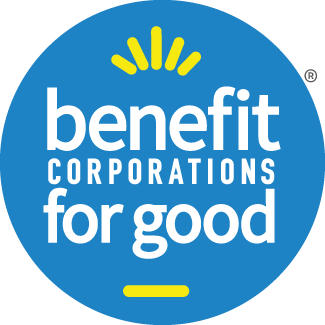Refreshing the Triple Bottom Line: Living Up to Its True Intent
Is the Triple Bottom Line of People, Planet and Profit still as relevant today as it was when the term was coined in 1992? Yes, with a twist that benefit corporations embody heart and soul.
People, Planet, Profit – the hallmark values of the triple bottom line are espoused by many companies today.
It’s a business model that advocates for business goals outside of just making a profit. Like many leaders around the world, Tom and I applaud this idea.
We love the premise and celebrate its adoption. It’s a philosophy we live and promote through our business-- certifying Benefit Corporations for Good. It reflects the intent of social entrepreneurs, conscious capitalism, and conscientious leadership.
It’s about putting soul into business.
As defined historically, “The Triple Bottom Line, (TBL) is accredited to a number of people, but some of the earliest public mention of it was with the management think-tank AccountAbility. John Elkington used it in his 1997 book Cannibals With Forks: The Triple Bottom Line of 21st Century Business. Since then, the term has become prominent in corporate and environmental conversation. . of environmentalism.“
Yet, today, for many, the ‘Triple Bottom Line’ are just words. It is a phrase too easily thrown around, but not backed up. It truly has become just an empty promise for many companies. It’s the “right” thing to tell your customers as the message certainly resonates with many members of the Millennial generation and Generation Z. Who doesn’t want to say that their business believes in the environment and in creating community “Good?”
Do these Companies Practice what They Preach?
Indeed, there are many concerns around measuring a company’s actual commitment to people and the planet, the first two “Ps” of the TBL. It’s easy to track profit but how do you truly measure a company’s impact on people, be it employees, partners, vendors or the community.
John Elkington stated in a Harvard Business Review article published a year ago:
“The TBL (Triple Bottom Line) concept has been captured and diluted by accountants and reporting consultants. Whereas CEOs, CFOs, and other corporate leaders move heaven and earth to ensure that they hit their profit targets, but the same is very rarely true of their people and planet targets. Clearly, the Triple Bottom Line has failed to bury the single bottom line paradigm (Profit).”
The Idea was to change systems and processes to serve not just investors and stockholders, but to be more responsive and track progress around social and environmental goals.
It seems much of our capitalistic business model does not come close to advocating for the share of the wealth of our nation. Beyond the wealth gap, we are failing to create healthy communities for ALL, or taking the needed steps to protect our planet. Even those businesses who claim to be a believer in the TBL are not delivering on the purpose behind this concept.
A New Model
If the output is not true to the ideal it may be time to re-focus. In 2020, we are facing dual emergencies: The pandemic of COVID-19 and the national awakening to the devastating reality of racial injustice in America. It’s time to reinvigorate the purpose behind the triple bottom line!
Perhaps to motivate businesses to truly actualize the intent of the TBL we should put focus on the phrase: People & Planet First
There used to be a saying, ‘no money, no mission.’ Given the growing appeal for consumers to buy and work for purpose-driven companies, perhaps it is time to reverse this phrase to ‘No mission, no money.’
Benefit Corporations Reflect the Ideals of the Triple Bottom Line
Truth be told, while many corporations are failing, we have encountered many wonderful small and midsize businesses, many Benefit Corporations that live up to the intent of the triple bottom line. While there is still too much greenwashing, , this business model is proof that committing to deliver on business practices that support the community and protect the environment is both possible and profitable.
Fortunately, with the emergence of Benefit Corporations and B Corps, we now have proven scoring mechanisms and tools to measure ‘People and Planet’ goals. These tools can help us evaluate the efforts of businesses around sustainability, employee practices, community initiatives, environmental policies and inclusion and equity efforts. What’s more, these certification processes measure the sincerity and authenticity of a business dedicated to the “common good.” These certified companies stand tall as pure reflections of businesses operating with a People & Planet First attitude that helps create the third ‘P’ of Profit.
If we have learned anything over the past year, it is that we are all connected. We are in this together and to be transformative, we need to problem-solve solutions together. This means government agencies, academia, non-profits, community organizations, the faith community, schools, and businesses working collaboratively – with a focus on People & Planet First. With this shift, we believe equitable profit will subsequently follow.
Today, we challenge small and large businesses to step up, be brave and actualize the triple bottom line putting the focus on People & Planet. We may just create a better world for ALL.
~benefitcorporationsforgood.com~

